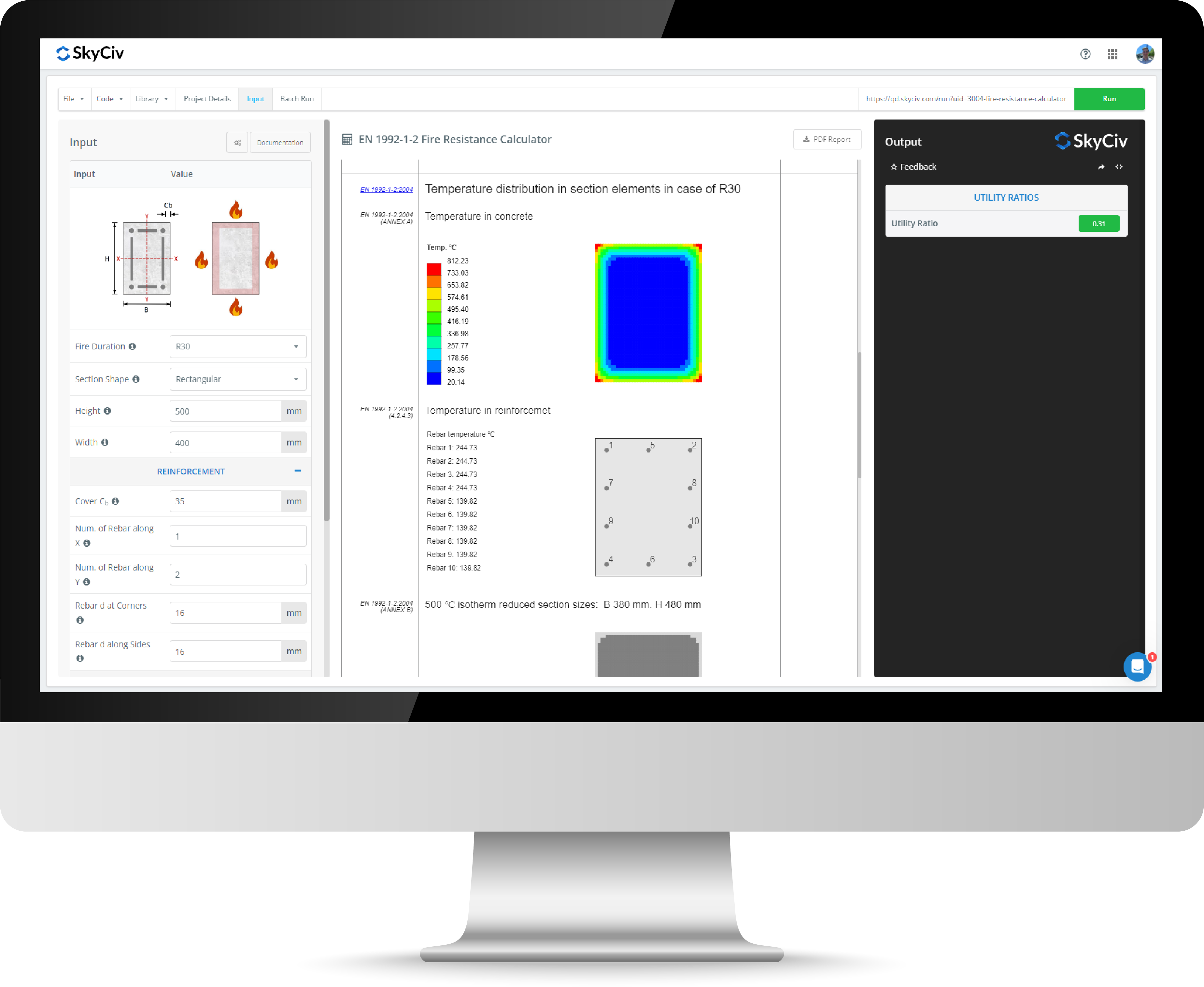Lifting Lug Calculator
A lifting lug (also known as a lug or a pad eye) is a device commonly found on a range of equipment and structures including storage tanks, shipping containers, and other vessels that need to be lifted ad moved around. The design and analysis of lifting lugs is complicated as various modes of failure must be checked. The SkyCiv Lifting Lug Calculator allows you to calculate the capacities of Lifting Lugs based on length, width, and height as per the AISC 360 ASD method. The lifting lug capacities calculated in this calculator included maximum tension capacity, maximum bearing capacity, maximum shear capacity, maximum pin tear-out capacity, and weld capacity.
About the Lifting Lug Calculator
What assumptions and limitations exists with the Lifting Lug Calculator?
The lug is checked for the following:
- Tensile Ultimate Resistance of Plate
- Tensile Yield Resistance of Plate
- Bearing Resistance
- Shear Resistance
- Pin Tear-out Resistance
- Weld Resistance
- Combined Resistance due to Tension and Bending.
Currently, the lifting lug calculation is based on the E49XX electrode only. The calculator only supports metric units.
Does the calculator consider lifting angles?
Yes, any lifting angle can be provided as an input to the lifting lug calculator with our lifting lug calculator which will be used ultimately for checking the weld strength.
AS 4100:2020 Lifting Lug Design Software
SkyCiv also allows for the design of lifting lugs as per Australian Standard 4100. To access this version please switch design codes using the flag icon at the top of the input panel. The AS 4100 lifting lug design tool allows you to calculate the capacities of a steel lifting lug based on its length, width & height. The capacities calculated include bearing, shear, bending and weld capacity.
Disclaimer: Lifting Lug Calculator
The SkyCiv Lifting Lug Calculator tool is for the preliminary design of lifting lugs as per AISC only. When designing lifting lugs, additional factors, such as attachment stress, may need to be considered to avoid distorting and integrity of the vessel during lifting operations.
In scenarios where attachment stress is significant, it is strongly advised that engineers consult additional sources beyond initial lifting lug calculations provided by this tool. Further design checks should involve performing checks with well-meshed finite element analysis, consulting qualified expert engineers, and conforming to all relevant local design codes.
What equipment is the calculator relevant for?
The lifting plate configuration is applicable for almost any type/part of equipment being lifted including skids used in the Oil and Gas, Piping industries.
Lifting Lug Calculator FAQs
What design code are this calculations based on?
This lifting lug calculations in this tool are based on the American Institute of Steel Construction (AISC) code.
What units are supported in the lifting lug tool?
The calculator only support metric units.
What electrode is the calculator based on?
Currently, the calculation is based on the E49XX electrode only.
Can these calculations be used with any equipment?
The lifting plate configuration is applicable for almost any type/part of equipment being lifted. Commonly this includes equipment such as skids used in the oil, gas, piping industries.



